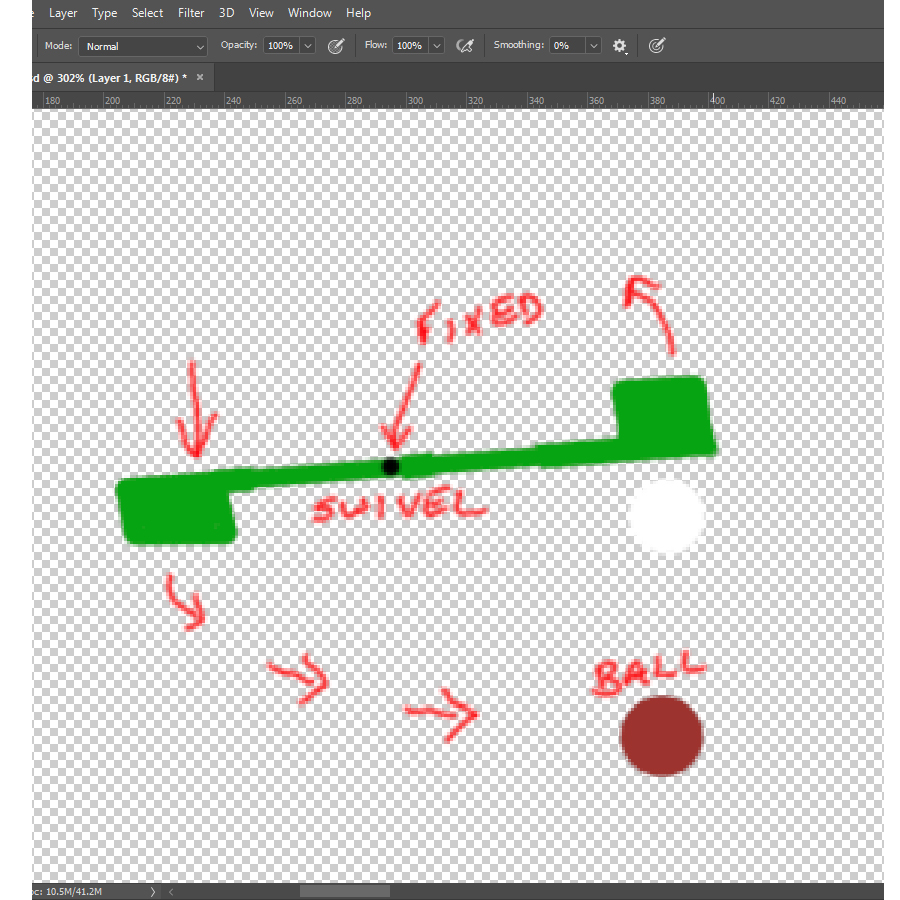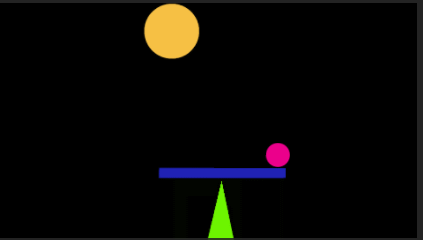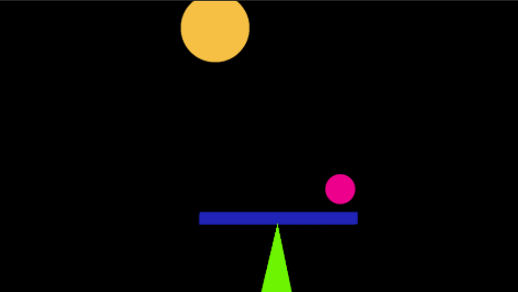Inside The Physics
Copy link to clipboard
Copied
First let me say, the physics behavior is awesome. I love that you can control the gravity, weight, friction, etc. It is advanced enough that you can create an animation to resemble a Rube Goldberg machine.
The physics in my animation are mostly working as expected. There are a couple of sticking points for me. My first puppet (I'll call it the Swivel) is like a stick and has dynamics and collision as well as a fixed point at its center so it will swivel around when contacted. My second object (I'll call it the Ball) is a circle and only has collision, so it floats near the Swivel. I want the Swivel to be hit and begin to spin, then collide with the second, causing the second to fly off quickly. It'd sort of be like a bat swinging around to hit a baseball.
The Swivel doesn't seem to spin very quickly and the Ball doesn't go far or fast. Each has its own physics behavior. I've adjusted the gravity for the Swivel. I've adjusted the weight, friction and bounciness for both. Occasionally, these adjustments give me unexpected results. They never give me a harder Swivel-hitting-the-ball result.
How are gravity and weight related? Can I assume that increasing the gravity is not the same as increasing an object's weight? And when does friction come into play? There's no air resistance, is there? Is it only when two objects collide?
Sorry, lots of silly questions. Would love a better understanding of how these physics parameters work together.
Copy link to clipboard
Copied

Here's an image to give you a visual.
Copy link to clipboard
Copied
Have you tried magnets? Might be another way to do the pivot point... maybe....
Copy link to clipboard
Copied
Have you seen the Physics Playground puppet, available here Character Animator Examples
It has some behaviors similar to what you describe, and may provide some ideas.
To address your questions:
How are gravity and weight related? Just like in real life
Can I assume that increasing the gravity is not the same as increasing an object's weight? Yes
And when does friction come into play? When two objects touch
There's no air resistance, is there? There is only wind, but resistance of still air is an interesting idea
Copy link to clipboard
Copied
Here's a mini adaptation from the physics playground example

Copy link to clipboard
Copied
I have done some further investigation of the physics behavior to try and better understand. I created 8 circular balls as separate objects, and a flat rectangle object to serve as the floor. In testing different physics parameters, I got results I didn't expect.
I added a physics behavior to the top level puppet. As I understand it, this applies to any of my objects that do not have their own physics behavior added. So, four of my balls went without their own physics behavior. They were like a control group.
The other four had physics added. I then gave each of the four different settings for gravity, weight, friction and bounciness. I only varied these parameters one at a time so I could see how the different settings affected the four balls.
When I gave each ball a different weight (but same gravity, friction, bounciness), they all dropped and bounced in unison. When I gave them each different friction, same thing. Surprisingly, when I gave them each a different bounciness, they all bounced the same.
Also, when I put all of their parameters back to match my four control balls, they dropped and bounced very differently, despite exactly the same physics settings. I made sure the puppet was armed as well as all of the gravity behaviors I was comparing. Did I set something up wrong? I'm confused at the apparent missing logic in how the physics works.
Copy link to clipboard
Copied
I have no idea - but sharing the project might help. I agree that sounds weird! Otherwise if you solve it plz share what you learn!
i liked Jerry’s solution, but it was not perfect. The see saw did not move completely naturally. Understanding the limits of physics would be useful.
i have used physics a couple of times. For falling balls it did look much more natural. But understanding how much fourther you can go is interesting.
Ps the reason I mentioned magnets is I had problems at times stopping it from rotating! I think it might work better for the hinge point of the see saw
Copy link to clipboard
Copied
I did try Alan's suggestion of using a magnet and here is the result. I like it better than just using physics.
